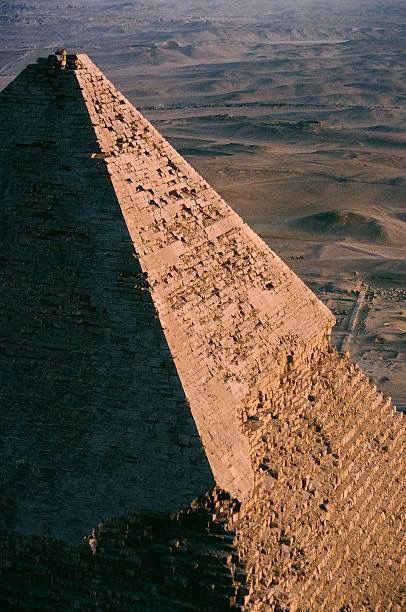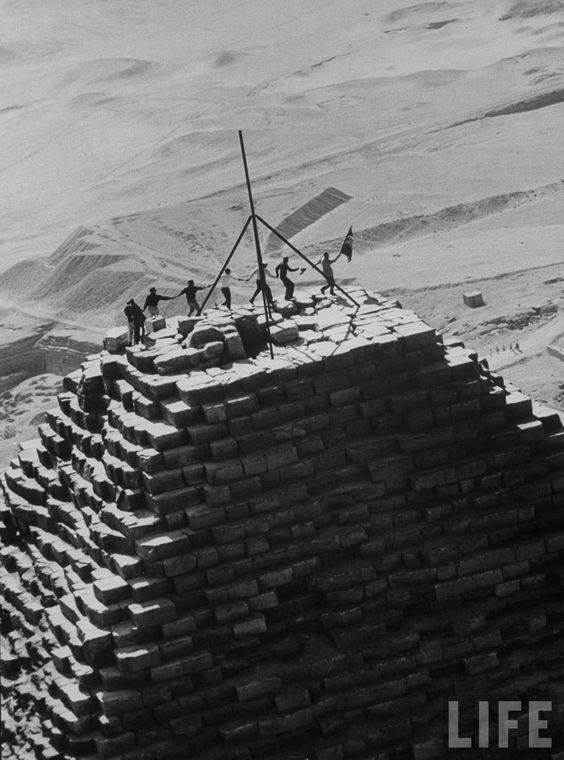The way the Egyptian pyramids were built is really interesting! It turns out that it wasn’t as complicated as some people think.

The first pyramid, built by architect Imhotep for Pharaoh Djoser, was actually just a smaller rectangular pile of blocks on top of a bigger one. Imhotep’s idea of stacking these layers eventually led to the creation of the iconic pyramid shape.
Pyramid of KhafreView of the summit of the Pyramid of Khafre at Giza.

Before the pyramids, pharaohs were buried in underground tombs called mastabas. Imhotep’s innovation was to build a smaller mastaba on top of a bigger one, gradually creating a pyramid shape. Sneferu, who came after Imhotep, was really passionate about pyramids and introduced the concept of a smooth, sloping wall covered in polished limestone.

Now, the exact details of how they moved and lifted the stones are not known, but it’s believed that the stones were dragged on sleds with the help of many workers.

Can you imagine? Just eight workers pulling a 25-ton block with a sled! As for lifting the stones higher and higher, it’s suggested that they built ramps made of sand that gradually increased in height as the pyramid was being built.
Giza 4,600 years ago. A wonderful image depicting life near the pyramids ca. 4,600 years ago. Image Credit @9GAG

Building the Egyptian pyramids was a massive undertaking, using ancient technologies and the labor of countless workers. We’re still not completely sure about all the methods and techniques they used, but ongoing research and archaeological discoveries are helping us learn more about this incredible engineering achievement.

